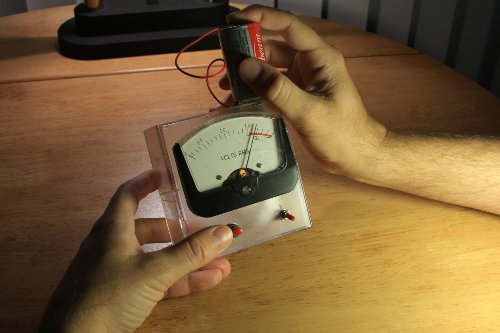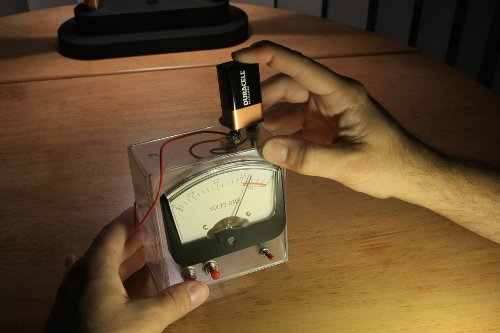| Simple Battery Tester | ||||||||
| Main | Schematics & Construction | >>> Other Projects | ||||||
The schematics is pretty simple - the "Voltage Selector" switch is used to select the range for the the meter (almost any sensitive voltmeter or an amperemeter will work) and the "Load" button is used to apply the load:

Probably the only thing that may need explanation is why there are no values for the resistors R2, R3, R4 and R5 on the diagram above... It all depends on what kind of meter you use to show the battery charge. The one that I got for my project was something that externally looked like a voltmeter, but turned out to be more of a milliamperemeter. If you have a milliamperemeter as well, it is quite easy to calculate the approximate values for those resistors. For example, let say you have a milliammeter with maximum range of 20 mA. Let then say that you want the voltage selector switch to choose between two maximum ranges - 2V (for AA-type and similar batteries) and 10V (for testing 6V and 9V batteries). Using Ohm's law, you can calculate that in order to get voltage of 2V to deflect the needle to the maximum range of the ammeter (20mA) you need R2 + R3 = 2.0 V / 0.02 A = 100 Ohm in sequence to the meter. Depending on what resistors you might have handy, you can select something like 47 Ohm for R2 and a 100 Ohm trimpot for R3. This will give you a range of 47-147 Ohm, so plug in a source with known voltage and adjust the trimpot until you get the needle where you want it. Same line of reasoning will give you the 10V range resistors: R4 + R5 = 10.0 V / 0.02 A = 500 Ohm, which means that you could grab a 220 Ohm for R4 and 470 Ohm for R5, giving you range of 220-690 Ohms for the 10 Volt setting. Construction A 3.5" Floppy-disk box turned out to make a perfect enclosure for this mini-project: 
 The design of the test terminal allows both 9V and 1.5V batteries to be tested by holding the battery with one hand and pressing the load button with the other: 
 A note of caution Please, unless you really know what you are doing, don't use this design to test high-current batteries (like car batteries). A shorted car battery can do a surprising amount of damage and can be dangerous. |
| [ Other Projects ] |
| Main | Schematics & Construction | >>> Other Projects | ||||||
 | ||||||||